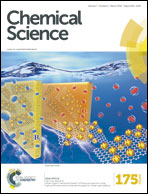Asymmetric 18F-fluorination for applications in positron emission tomography
Abstract
Positron emission tomography (PET) is becoming more frequently used by medicinal chemists to facilitate the selection of the most promising lead compounds for further evaluation. For PET, this entails the preparation of 11C- or 18F-labeled drugs or radioligands. With the importance of chirality and fluorine substitution in drug development, chemists can be faced with the challenge of preparing enantiopure molecules featuring the 18F-tag on a stereogenic carbon. Asymmetric 18F-fluorination is an emerging field of research that provides an alternative to resolution or conventional SN2-based radiochemistry. To date, both transition metal complexes and organomediators have been successfully employed for 18F-incorporation at a stereogenic carbon.

- This article is part of the themed collections: Global challenges: Health & Food and Celebrating the 2016 RSC Prize and Award Winners

 Please wait while we load your content...
Please wait while we load your content...